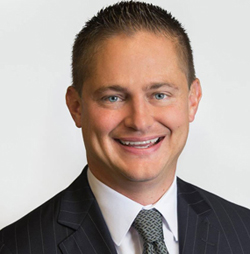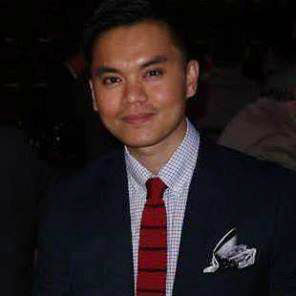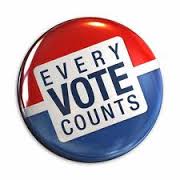Click here for District 8 candidate responses.
Click here for District 3 candidate responses.
Responses to questions sent to District 6 Garland City Council candidates, Eric Elmore and Nat Nam Pham, are below:
Eric Elmore – District 6 candidate
How long have you lived in Garland?
30 years. I was born and raised in Garland and attended my entire K through 12 education here and have lived here on-and-off for 35 years. I have also lived in Dallas, Sachse and Durham, England.
Why do you wish to serve on city council?
I want to see what’s going on in our community from an executive viewpoint and lend my expertise and vision where applicable. As a citizen, there are so many obvious things that need to be fixed and I want to fight hard to get them done for the residents of my district.
 What do you feel the city’s assets are and how can they best be used?
What do you feel the city’s assets are and how can they best be used?
Garland’s greatest assets are the City’s Services. We have the best Police, Fire, Powel & Light, among other departments, compared to our peer cities and we are fortunate.
GPD has one of the most advanced training facilities in Texas and invests in nearly a year of training into every officer before they go on patrol alone. Nearly a thousand people will apply but only a few dozen will be selected to serve as an officer.
GFD is the most efficiently run Fire department compared to other cities of similar size based on number of stations and firefighters per capita. Our firefighters love our citizens and they take pride in providing excellent services for us.
I have experienced several times where I have lost power and GP&L has restored it under an hour! I have lived in other cities and it has taken days, sometimes, to restore power during an outage. I know some residents don’t like the idea of not being able to shop for electricity service, but when you weigh the service we receive to not being able to select another provider, speed and quality of service wins.
Our city’s services are first-in-class and we need to leverage that in communicating it to our current citizens and future home buyer’s looking to Garland for their new home.
What do you feel the city’s liabilities are and what can be done to improve them?
Aging infrastructure. Without adequate roadways and sidewalks – business will not want to remain/relocate here and residents will grow tired of hitting potholes and not want to stay in Garland.
What are the biggest needs/problems in District 6 and what can be done to solve them?
District 6 is approximately two-thirds residential and one-third commercial.
Quality housing is a challenge on the residential front. Most of the homes in the district were built in the 1960s and there’s not much land left to build new homes on. We have to look at how we can maximize building quality housing when space does become available. This may include a mixed use development with attractive housing and retail establishments to also address our lack of dining and shopping options.
What are District 6’s most valuable assets and how can we capitalize on those?
District 6’s most valuable assets are our retail and warehouse/industrial facilities.
Our retail and shopping centers are dated and need to be revitalized. I would like to see the project that was undertaken at the Garland Shopping Center at W Miller Rd. and S Garland Ave. implemented at our shopping centers at Walnut St. and Jupiter Rd. We are in dire need of new restaurants and retailers so families can enjoy these services closer to home, instead of losing business to neighboring Richardson.
This will help residents feel part of the local community and city to not lose vital revenue to nearby cities.
Furthermore, West Garland warehouse/industrial district has little exposure and is often over looked by businesses searching for industrial and warehouse space. I want to work with owners and property managers to try and find ways to reach potential businesses and get them to look at our area as a top choice for expansions and relocations. Not only will our commercial district look better because these facilities are now occupied but will further aid the city with additional business property tax revenue.
Bao Vinh – District 6 candidate
How long have you lived in Garland?
I have lived here close to 30 years after my family fled Communist Vietnam in the mid-80s and was processed through the UN High Commission for refugee resettlement. I am the emerging second generation of Vietnamese-Americans, being Western educated and willing to contribute back to Garland.
 Why do you wish to serve on city council?
Why do you wish to serve on city council?
Having gained a solid education and professional success as a pharmacist, I believe in the highest honor of civic duty, engaging in the political process to better the lives of those around you. I firmly trust in our democratic institution and feel Garland needs a representative that looks just like the growing diversity that we have. I feel Garland could use a newer, youthful, passionate spirit to bring a fresher outlook to the city’s future endeavors.
What do you feel the city’s assets are and how can they best be used?
Our greatest assets as a city is the many minority communities (Vietnamese, for example) that make up our demographics. If we can engage these communities, we can utilize these human resources to bring forth entrepreneurial growth, business developments, neighborhood revitalization to make local government effective to resident/commercial demands.
Our developed city contains established neighborhoods with a good population density that have frameworks of infrastructure already laid in place. This is important compared to many other cities growing or expanding having to lay new infrastructure of sewage, water treatment, waste disposal, and power utility. We as a city provide most of our utilities in house, allowing for us to potentially control/reduce costs versus relying solely on third-party companies to service our residents.
What do you feel the city’s liabilities are and what can be done to improve them?
As a city with rich, historic older neighborhoods, there is a compelling need to find ways to revitalize them. Much of our properties in these areas have found new life through rental tenants. This liability requires a need to find ways to invigorate personal responsibility of landlords and tenants to maintain the property through a proper reward system or voucher/rebate program that helps to offset costs for maintenance and upgrades. By looking towards these neighborhoods, we should have a plan to grade or prioritize our Capital Improvement Budget to address concerns or deteriorating conditions of sidewalks, drain-ways, or roads so that execution of redevelopment or preservation process is fair and vital to our city’s needs.
Our infrastructure will be the city’s liabilities because it is in need to be upgraded to the newer stresses and demands. Water, Electric, and Roads will be the three biggest needs for improvements so that supply and conditions will allow for residents/commercial to have peace of mind on its reliability, availability, and soundness without disruption.
Lastly, our city’s liabilities is the minorities who need to be engaged to participate in bettering our neighborhoods, making it safe, sustainable, and sound. By having a face that is close to these minorities, will you have more ethnic communities willing to participate in our democratic process and city activities.
What are the biggest needs/problems in District 6 and what can be done to solve them?
Some of the biggest needs will be to find new developers to look towards West Garland as a key development area if Garland wants to accomplish the Comprehensive Plan Envision Garland 2030. Most developments are towards North Garland at the George Bush Tollway, although it is good because it is a newer area, the focus should be towards areas that will have provide stronger growth because of the density population already settled there. Sometimes it is necessary to look to building up or redeveloping areas to tackle Garland’s landlocked situation.
Property values are not robust because certain neighborhood conditions and/or roads are not well-paved or paved in a poor manner. By focusing also on development for vacant shopping lots to be redeveloped into mixed-used commercial/residential prime spots, can we effectively grow West Garland, District 6 into a urban, pedestrian-friendly and transit oriented area potential.
What are District 6’s most valuable assets and how can we capitalize on those?
District 6’s valuable asset is its location within the city’s geography. This area is close nearby to North Dallas, Addison, and Richardson, allowing vehicle mobility access via I-75 or I-635. It is also close to two DART mass transit stations for train rides/bus connections. If we focus on development or revitalization to this area of Garland, this district will become competitive to attract younger, urban, professionals both single or families to want to settle here. This will help improve property values as newer shops for dining, entertainment, and events will open up in this corridor area. We have to shift our development from catering to the automobile to other forms of transport: pedestrian-walking, bicycling, and mass transit.
How long have you lived in Garland?
I have been a proud homeowner in West Garland for over 40 years. I care about my neighbors and my neighborhood.
Why do you wish to serve on city council?
I am running for city council because I have a dedication and passion for serving District 6 and the entire City of Garland. I have been a homeowner in Garland for over 40 years and I have served my community in a number of ways. I was a member of the Garland Planning and Zoning Commission for 6 years; I am the current treasurer of the West Garland Neighborhood Association; and I have been a reserve deputy sheriff for over 15 years. I am dedicated to improving the quality of life for all of us in this wonderful and diverse community.
What do you feel the city’s assets are and how can they best be used?
Garland has some tremendous assets and advantages as a city. Our greatest asset is our people. The neighborliness of Garland people is what gives our community a small, hometown feel even though we are the 12th largest city in Texas. A second advantage is our location—our proximity to the regional core. District 6, for example, borders Dallas and Richardson. A third is our attractive cost of living. A fourth asset is our ethnic diversity. Finally, Garland is a beautiful place to live. The Arbor Day Foundation has designated us a Tree City for the past 11 years.
These advantages have been recognized by several recent surveys such as one naming Garland as a great place to raise a young family (move.org) and another identifying it as a great community for Millennials. With a median resident age of 30.5, many young people have already discovered the advantages of West Garland. The challenge is to capitalize on our great strengths and continue to improve our city services and quality of life and build our economic growth through community development, attracting more commercial and industrial enterprises, and promoting new projects.
What do you feel the city’s liabilities are and what can be done to improve them?
Garland faces challenges common to first-ring DFW suburbs—aging structures and infrastructure and limited opportunities for new development. We are currently in what is called a “build-out” stage of our evolution–nearly all of the vacant land has already been developed so future development will have to be redevelopment or renovation of existing properties.
Maintaining property values is essential for Garland’s long-term fiscal health. Code Enforcement and other applicable city departments need to work with our property owners and residents to modernize and revitalize all of Garland but especially the established neighborhoods like West Garland. The Neighborhood Vitality Program is one important initiative in that direction.
We need to attract new businesses to redevelop some of our existing commercial real estate. Garland’s tax base for 2016 is 57% residential. Attracting new businesses would alleviate some of that tax burden on our private citizens or provide new funds to invest in further community development.
I participated in the formulation of the Envision Garland 2030 Comprehensive Plan. I continue to support the concept of a planned and consistent physical and economic development for the City of Garland. We have envisioned, now we must consistently and energetically implement our plan for a Garland that retains its small, hometown feel while being the twelfth largest city in Texas.
What are the biggest needs/problems in District 6 and what can be done to solve them?
One major concern is that some of West Garland’s real estate and infrastructure is aging. About ninety percent (90%) of the houses in District 6 were built before 1981. While many parts of District 6 show the pride of homeownership of our long-time residents, other parts are quickly deteriorating or becoming obsolete or outmoded. Some of our property deterioration is because the owners are themselves aging. Other deterioration may be due to out of town landlords who may be unaware of problems.
Maintaining property values is essential for Garland’s long-term fiscal health. Code Enforcement and other applicable city departments need to work with our property owners and residents to modernize and revitalize District 6 and all of West Garland. We must especially invest funds in improving our roads and infrastructure. The Neighborhood Vitality Program is one important initiative in that direction.
A second concern is parking. About 50% of District 6 residents are renters. Some residents do not have sufficient parking at their apartment complexes. We need to work with apartment managers to find solutions to this spillage and to the parking of larger vehicles and trailers in residential streets. Parking on both sides of residential streets poses some safety concerns—increased traffic accidents and reduced passages that are too narrow for ambulances and fire and rescue vehicles.
A third concern is nuisance violations. We have noise complaints in evenings, especially on weekends. We have also had some other disturbance of the peace complaints that need to be quickly addressed.
As the City Council representative for District 6, I will listen to my constituents and work with them to resolve their community-related issues. I will facilitate communication between the residents of District 6 and the city government. I will work to utilize city resources (Code Enforcement, Police, the Neighborhood Vitality Program, economic development bond money, CDBG grant funds, and so forth) to benefit our wonderful West Garland community.
What are District 6’s most valuable assets and how can we capitalize on those?
West Garland shares the many tremendous assets and advantages of the larger city. What makes our community special is our people. We have residents who have lived in West Garland for 30 or 40 years.
One particularly personable resident has lived here for 50 years! People stay here because it’s a wonderful community with a great location. In turn these wonderful neighbors make this a wonderful place to live.
Location–our proximity to the regional core—is definitely another one of our assets. District 6 borders Dallas and Richardson. Thirdly, we are proximal but offer a more attractive cost of living. A fourth advantage is the stability and beauty of our neighborhood. Many of our homeowners have lived here for more than 30 years. Even our renters are long-term—most have lived here for more than 10 years.
A fifth asset of West Garland is our ethnic diversity. About fifty percent (50%) of our population is latino. The other fifty percent (50%) represent the Vietnamese, East Asian, White, African, African-American, South Asian, and Middle Eastern communities. This diversity is part of what makes West Garland a special place to live and work.


